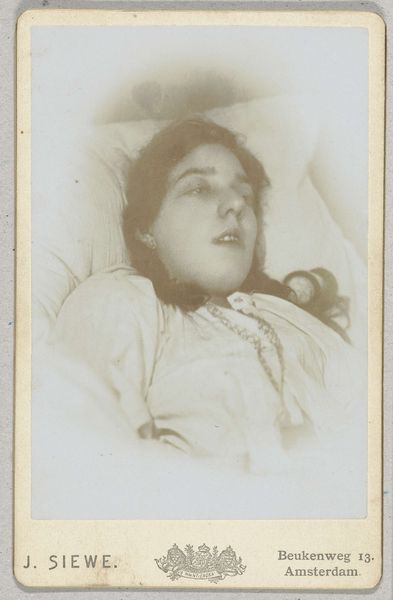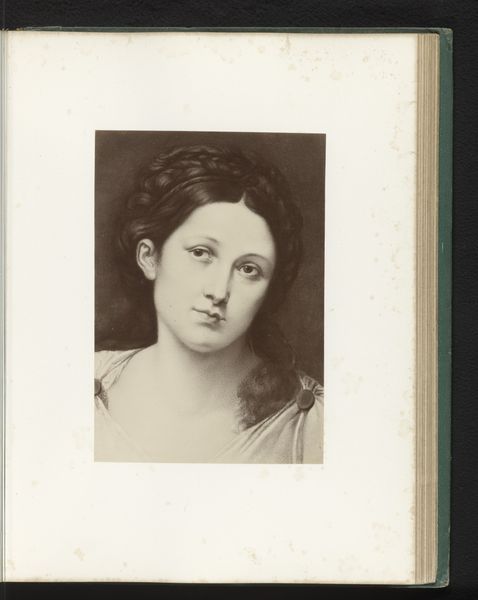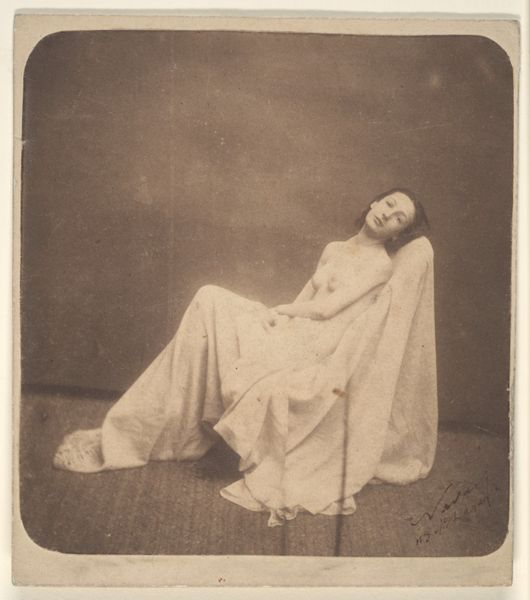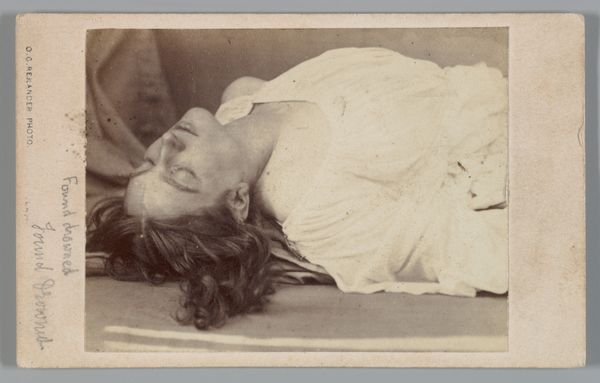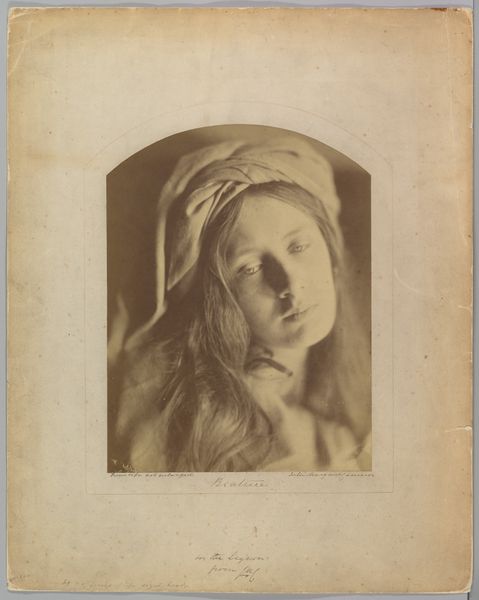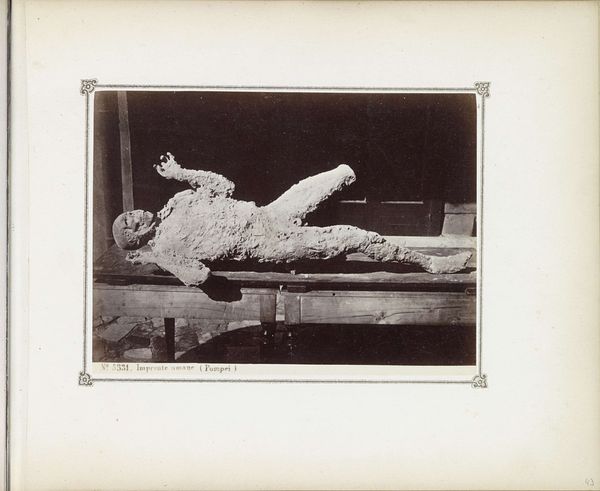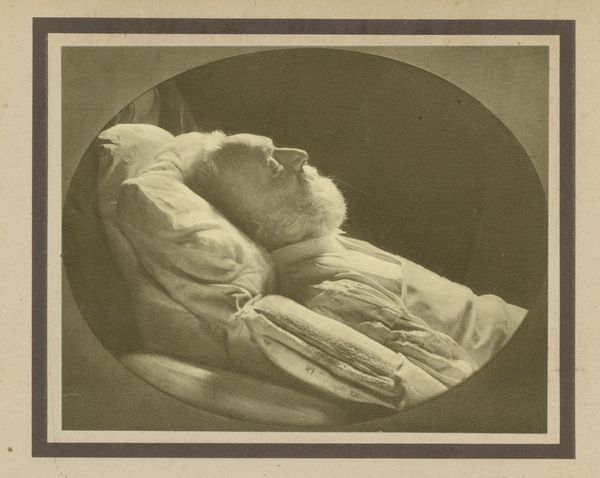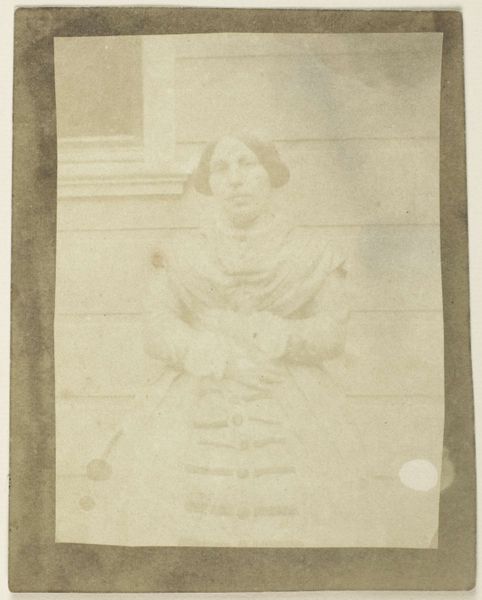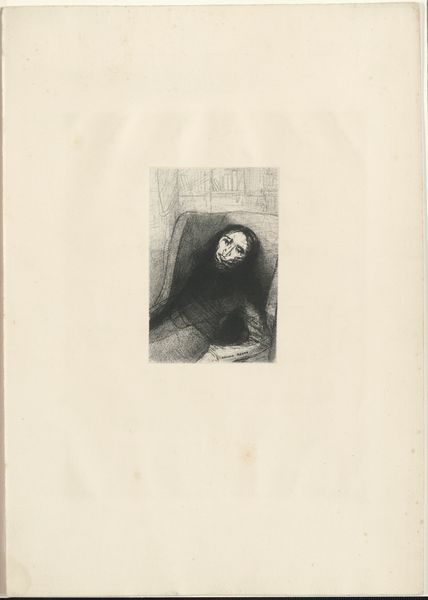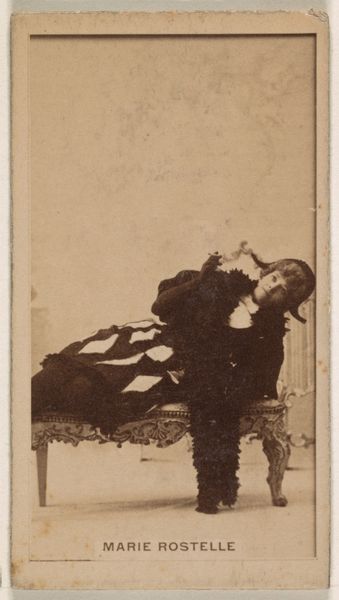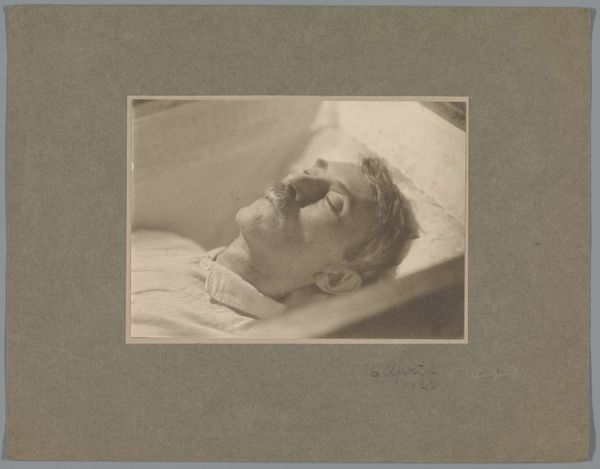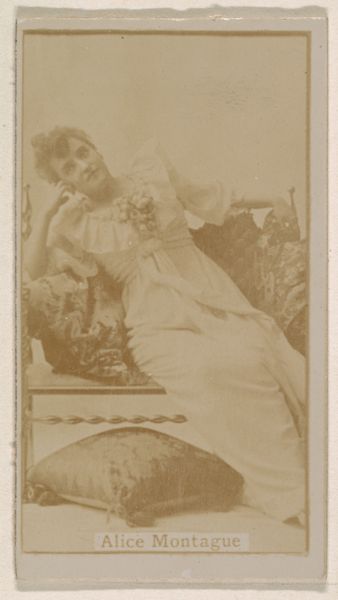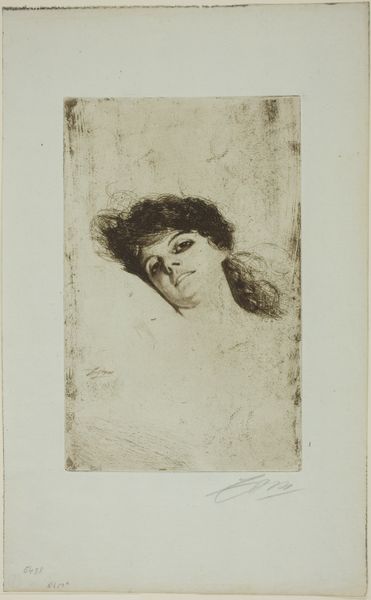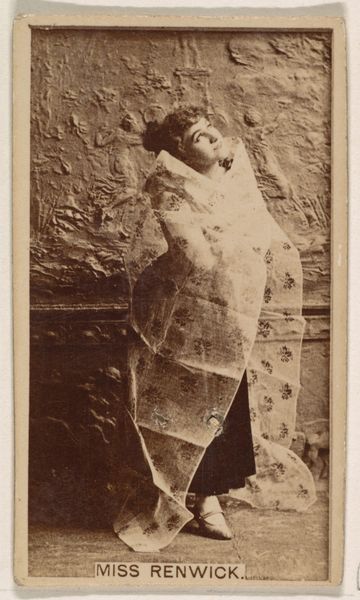
painting, photography
#
portrait
#
muted colour palette
#
painting
#
impressionism
#
white palette
#
photography
#
framed image
#
underpainting
#
white focal point
#
tonal art
#
realism
Dimensions: height 145 mm, width 114 mm, height 188 mm, width 138 mm
Copyright: Rijks Museum: Open Domain
Curator: Let's discuss this intriguing piece, a photographic reproduction of a painting by Marie Witsen, likely created sometime between 1860 and 1915. It presents a portrait study of a woman in muted tones. Editor: Immediately, I'm struck by its melancholic stillness, almost as if time itself is suspended. The restricted palette really accentuates that. Curator: Yes, the tonal arrangement is quite remarkable. Consider how the photographer translated Witsen's painterly approach. Note how light plays across the face, almost obscuring details in a veil of luminosity, thus manipulating the pictorial space. Editor: It's fascinating to consider this artwork as a product of both painting and photography. It makes me think about the materiality of both processes – the oil paints versus the photographic emulsion and the social context of each medium at the time. Was this a cost-effective method of making her paintings accessible to a wider audience, a kind of early art print perhaps? Curator: Possibly. The semiotic value of the photographic reproduction adds a new layer to Witsen’s original intentions; is it attempting to mirror, reframe, or reinterpret Witsen’s stylistic vocabulary? Editor: It highlights the changing landscape of art production. What does it mean to reproduce art through new technologies? It challenges our notions of originality, labour, and accessibility. How did this alter perceptions of women artists who sought greater exposure? Curator: Those shifts in reception cannot be separated from the intrinsic image properties; its composition centers on this single, pensive figure; how its framing manipulates depth and focus is noteworthy and relevant, Editor: Precisely. Examining the portrait in context—who had access to photography at that time, or to art collecting in general? This artwork encapsulates a significant moment in social change in the art world. Curator: I concur. Its intrinsic elements are made all the more complex by the considerations it elicits around medium, replication, and spectatorship. Editor: Indeed, looking beyond aesthetics unveils rich social histories intertwined with materiality and method.
Comments
No comments
Be the first to comment and join the conversation on the ultimate creative platform.
